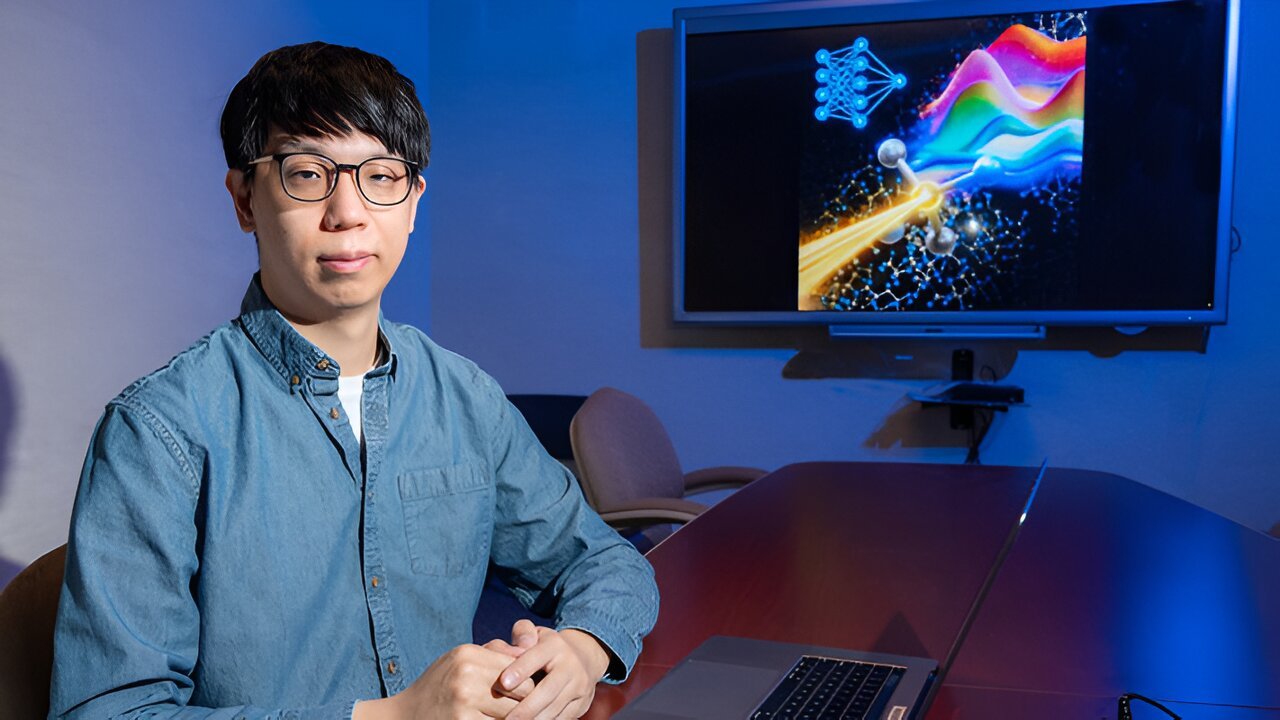Lawrence Livermore National Laboratory (LLNL) scientists have developed a new approach that can rapidly predict the structure and chemical composition of heterogeneous materials.
In a new study in Chemistry of Materials, LLNL scientists Wonseok Jeong and Tuan Anh Pham developed an approach that combines machine learning with X-ray absorption spectroscopy (XANES) to elucidate the chemical speciation of amorphous carbon nitrides.

The research offers profound new insights into the local atomic structure of the systems, and in a broader context, represents a critical step in establishing an automated framework for rapid characterization of heterogeneous materials with intricate structures.
Unraveling the atomic structure of heterogeneous materials, such as carbonaceous residues produced from the detonation of high explosives, has posed a significant challenge to materials scientists. The process is often labor-intensive, and in many cases, involves the use of empirical parameters.
To address this outstanding challenge, the team’s integrated approach begins with the development of machine-learning potentials capable of efficiently exploring the vast configuration space of amorphous carbon nitrides as a representative system. This neural-network-based model enables the identification of representative local structures within the material, providing insights into how these structures evolve with chemical compositions and density.
By coupling these machine-learning potentials with high-fidelity atomistic simulations, the researchers establish correlations between local atomic structures and spectroscopic signatures. This correlation serves as the basis for interpreting experimental XANES data, allowing for the extraction of crucial chemical information from complex spectra.
“In our study, we aimed to tackle the longstanding challenge of characterizing detonation products and disordered materials in general by integrating computational methods with experimental techniques,” said Jeong, the first author of the paper.
“Our approach not only enhances our understanding of these materials but also lays the groundwork for similar studies across different material systems and characterization methods. For example, the approach can be readily employed to predict elemental speciation for a broad range of carbonaceous residues and provide inputs for improving detonation models,” said Pham, the principal investigator of the project.
The study’s findings represent a significant advancement in the field of materials science, offering a robust framework for elucidating the atomic speciation of disordered systems. Moreover, the versatility of the approach means it can be readily adapted to investigate other materials classes and experimental characterization probes, paving the way for real-time interpretation of spectroscopic measurements.
The study involves a collaboration between researchers from diverse backgrounds, highlighting the interdisciplinary nature of LLNL research. As scientists continue to explore the frontier of materials design and characterization, innovative approaches like this one hold the promise of unlocking new opportunities for technological innovation and scientific discovery, Jeong said.
Other co-authors on the paper include Wenyu Sun, Marcos Calegari Andrade, Liwen Wan, Trevor Willey and Michael Nielsen.
More information:
Wonseok Jeong et al, Integrating Machine Learning Potential and X-ray Absorption Spectroscopy for Predicting the Chemical Speciation of Disordered Carbon Nitrides, Chemistry of Materials (2024). DOI: 10.1021/acs.chemmater.3c02957
Provided by
Lawrence Livermore National Laboratory
Citation:
Accelerating material characterization: Machine learning meets X-ray absorption spectroscopy (2024, May 10)
retrieved 11 May 2024
from https://phys.org/news/2024-05-material-characterization-machine-ray-absorption.html
This document is subject to copyright. Apart from any fair dealing for the purpose of private study or research, no
part may be reproduced without the written permission. The content is provided for information purposes only.









